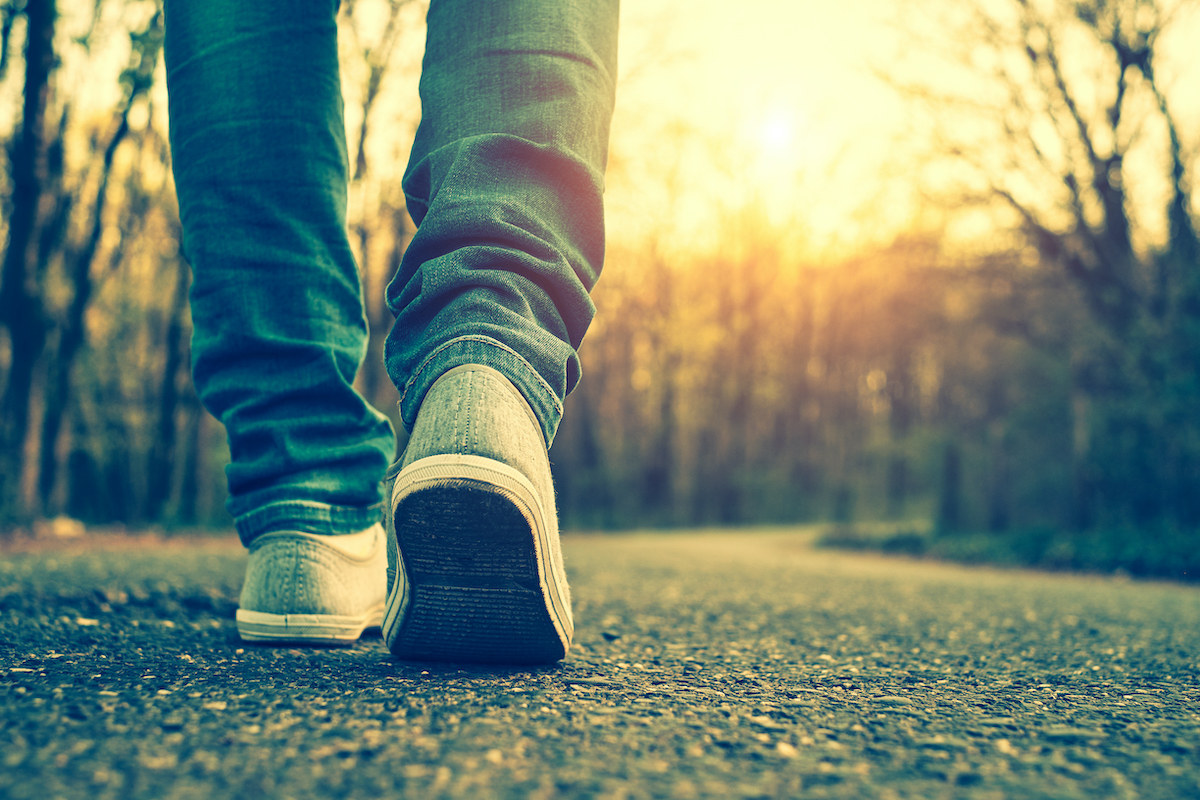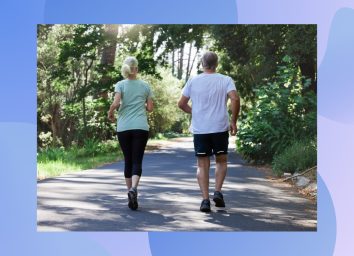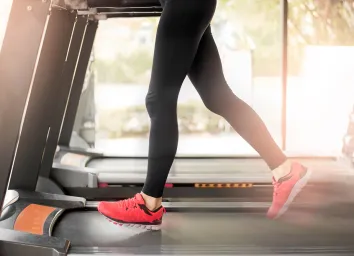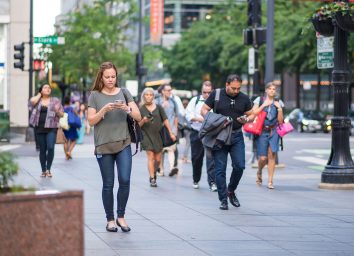If You Walk in These Shoes, Throw Them Out, Says New Study

It's simply a fact that as you get older, the force of gravity seems to get a little stronger, and your body needs to work a little bit harder to repair itself. If you're 45 or older, you may have experienced symptoms of osteoarthritis (OA)—otherwise known as "wear-and-tear" arthritis—which is when your joints take on a stiffness that may result in more nagging pain than you're used to. "For some people, the symptoms can be mild and may come and go," explains the UK's National Health Service. "Other people can experience more continuous and severe problems which make it difficult to carry out everyday activities."
One of the more common forms of osteoarthritis is knee osteoarthritis, which may begin with bone spurs and a slight loss of cartilage but may worsen over time to include joint swelling and severe pain. Those who suffer from the worst form of knee OA may suffer from cartilage loss so profound that they require arthroplasty, also known as total knee replacement. According to the Arthritis Foundation, there are somewhere in the realm of 28 million people in the United States who suffer from OA, and it's a condition that women are more prone to than men.
Related: One Major Side Effect of Going on a Single 1-Hour Walk, Says New Study
If any of this sounds achingly familiar—and you're waking up with more stiffness in your knees than you'd like—there are several things you can do to take action. For starters, the best way to heal your OA is to exercise more and set yourself on the path to weight loss. "For people with osteoarthritis (OA), exercise is good medicine," writes David Zelman, MD. "It eases joint pain, fights off fatigue, and helps you feel better overall. Want an easy way to get moving? Try walking. You can do it anywhere, and you don't need much to get started: Just put one foot in front of the other."
The Best and Worst Shoes for Walking
But there's another thing you can be doing, as well: You can be smart to wear the right shoes, and a new study published this year in the Annals of Internal Medicine sought to pinpoint which shoes are best for aging walkers who suffer from knee OA. The research team, led by Kade L. Paterson, BAppSci, BPod, Ph.D, a senior research fellow in Physiotherapy at The University of Melbourne, recruited 164 patients who suffer from knee OA and divided them into two groups: those who would wear flat and flexible shoes for at least six hours a day for six months, and those who would wear "stable supportive shoes." The researchers recorded changes in their pain while walking, their physical activity levels, and their "quality of life," among other metrics.
At the end of the study, the researchers found clear and convincing evidence that more stable and supportive shoes were superior for the bodies—and knees, specifically—of aging walkers. "Evidence did show a between-group difference in change in pain favoring stable supportive shoes," concluded the study. "Improvements in knee-related quality of life and ipsilateral hip pain favored stable supportive shoes."
Meanwhile, they observed that "flat flexible shoes were not superior to stable supportive shoes for any secondary outcome. Fewer participants reported adverse events with stable supportive shoes." What's more, the study found that those who wore the more flexible shoes were at double the risk of developing foot and ankle pain compared to the group that wore shoes with greater stability.
So if you're looking for the better pair of shoes for walking, the latest research suggests that you'd be wise to consider a pair of sturdier shoes. Given that we're living in a post-Born to Run world where many fitness enthusiasts swear by the practice of wearing minimalist "barefoot" running shoes that borrow from sandal-wearing tribal runners, the better pair of shoes for you would be found in the "neutral" or "structured" category of athletic shoes.
According to the experts at Runner's World, some of the best "stability" running shoes for 2021 include Hoka One One Arahi, the Brooks Adrenaline GTS 21, the Mizuno Wave Inspire 16, and the Asics GT-1000 9. However, if you're wearing shoes that have little support and perhaps even less cushion with buzzwords in their name including "glove" and "barefoot," you'd be wise to replace them soon. And for more reasons to prime your body to walk more every single day, make sure you're fully aware of What Walking for Just 20 Minutes Per Day Does to Your Body, According to Science.








